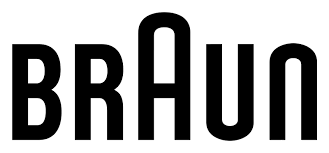Filed under: 1 | Tags: 10 to the 100, B&T your RSS feed isn't working., brands, crowdsourcing, Democreated, Google, internet democracy

The beauty of the internet is that it gives the potential for everyone around the world to connect with a speed and low cost we never would have dreamed possible.
Increasingly, it seems like companies are using the internet as a polling place to test out their new ideas and even to make their business decisions for them.
This is creating, if you will, business by ‘internet democracy’, sketched out by Andrew Keen in ‘Cult of the Amateur’. (Ironically, Wikipedia’s definition is brief and suggests more the use of the internet for political process.)
Let’s look at how ‘internet democracy’ is being used in business…
First, Google’s ’10 to the 100′ project::
You’ll find all the details at the 10 to the 100 website, but essentially for its tenth birthday the search engine giant has asked for proposals for social projects and committed $10 million to funding the projects that will help the most people.
From there, a shortlist of 100 ideas will be left to the public to narrow down to a 20-idea list, from which Google will pick 5 or less projects.
Crowdsourcing and then deciding by internet democracy probably makes it one of most minimal-effort advertising methods since everyone caught the viral bug.
Another case of business by ‘internet democracy’ is Democreated, a participatory design project by Spanish agency La Doma:
Yes, just take a short questionnaire on what you want to see in a brand, and you will get a share in the resulting crowdsourced business. (Just don’t forget to learn Spanish so you can read the terms and conditions.)
The philosophy goes that the characteristics that receive the highest votes are incorporated into a consumer brand, the resulting brand will be the most popular too.
So what? This has been done offline before!
Sure, we’ve had the Idol phenomenon, and plenty of phone polls, but this is different.
These projects are open to anyone across the world with an email address and an internet connection. It remains one vote per email address, which is a better way of ensuring one-person one-vote than phones. And better, it’s free for voters. No ridiculously escalated call rate, no dealing with grumpy administrators like in actual democracy – this is quick, easy and cheap.
So the internet democracy is being used for good and for profit, but what are the potential issues?
- Is what everyone wants, compiled, going to be of guaranteed mass appeal? For example, if I took the beat of a Rihanna’s ‘Disturbia’, the piano of Queen’s ‘Bohemian Rhapsody’, the guitar of Nirvana’s ‘Smells like teen spirit’ and the lyrics of James Blunt’s ‘You’re beautiful’, all of which have been hit songs in their time, would I still get a number 1 song?
- Even though the internet is now widely available in most developed countries, are all voters of interest in a position to participate? (It seems logical that a project that receives the most votes will affect/is liked by the most people, but only if internet users represent the entire market…)
- How much does your average web surfer know about business?
Google has maintained some control but La Doma has left themselves entirely at the mercy of the public… - What’s the incentive for the public to participate in the way you want them to?
Despite these, at the moment the concept retains enough novelty for it to grab attention for the product and the firm. Smart move – I will be very interested to see how it works out.






